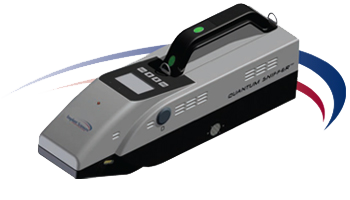A supplier of sensors and related products for homeland security purposes, Implant Sciences has announced that the company has received an order worth $1.1 million for its portable explosives trace detection (ETD) system, the Quantum Sniffer QS-H150. The hand-held explosives detector will be deployed in the Middle East for critical infrastructure applications.
Over 1300 units of the QS-H150 Quantum Sniffer has been implemented by several governmental and commercial security organizations for deployment in cargo screening, transportation security, aviation security, VIP protection, public safety and force protection applications worldwide.
 Quantum Sniffer H150 ETD
Quantum Sniffer H150 ETD
Using Ion Mobility Spectrometry, the Quantum Sniffer QS- H150 detects trace amounts of various commercial, military, homemade or improvised explosives and features a self-clearing and self-calibrating design which provides for a reduced total cost of ownership while providing a high degree of operational availability.
Implant Sciences’ Senior Vice President, Bruce Bower explained that the continuing threat of violence that disrupts everyday life in the Middle East requires an explosive trace detector such as the Quantum Sniffer. Bower stated that the QS-H150 detector has been designed in order to reduce the clogging problems caused by dust and sand, therefore enabling the detector unit to be always available and also improves security coverage.
The Chief Executive Officer of Implant Sciences, Glenn D Bolduc stated that the QS-H150 is detector unit that has a high demand and has features that include non-contact sampling, automatic self-calibration and does not have any radioactive materials.
The QS-B220 Quantum Sniffer is a narcotics trace detector developed by Implant Sciences to detect various narcotic substances as well as homemade, improvised, commercial and military explosives present even in trace amounts. Like the QS-H150, the QS-B220 detector uses ion mobility spectrometry.